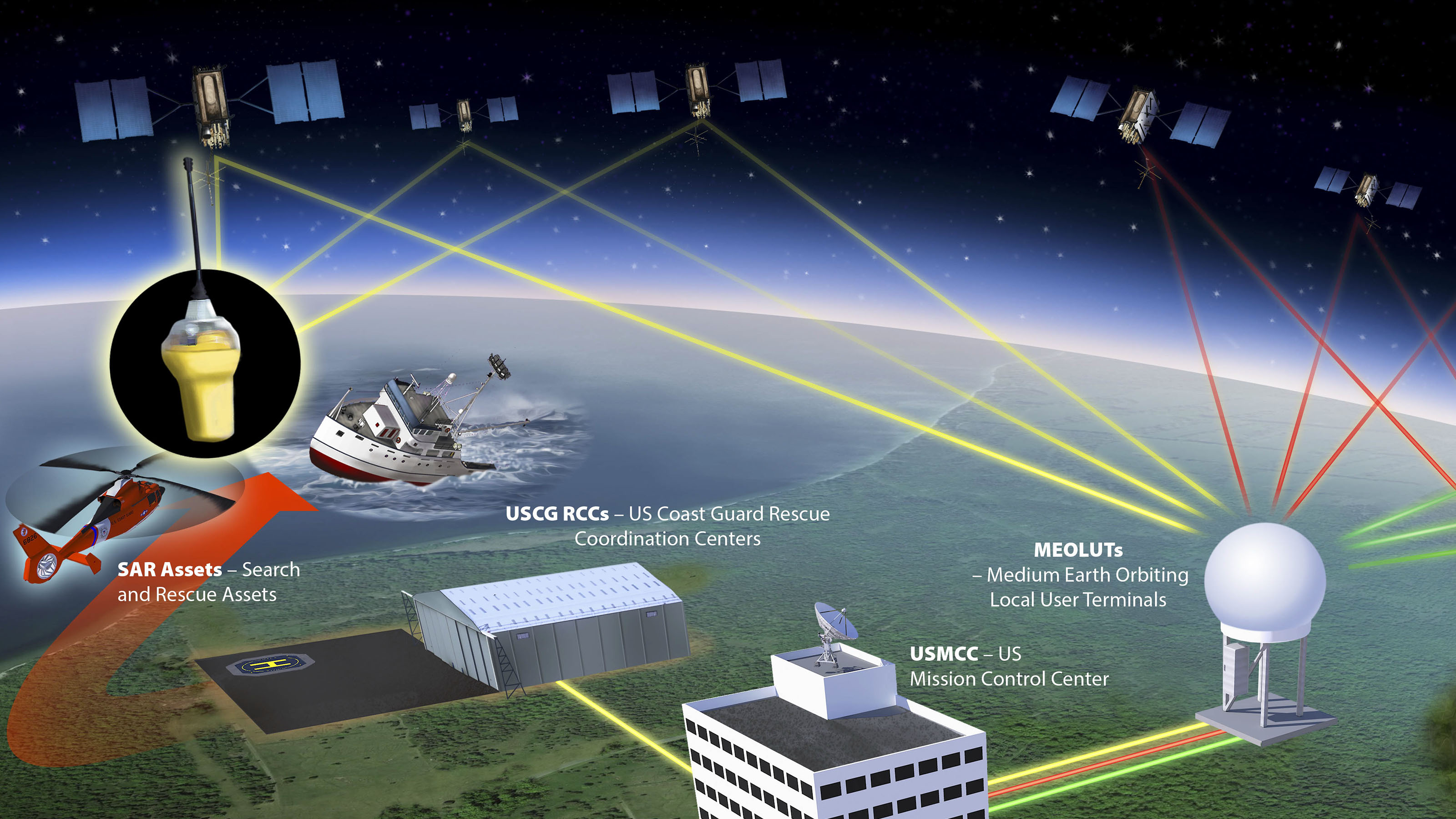New eye in the sky
Search and rescue gets a boost with GPS link
If an airplane goes down, minutes count. And rescuers are proud of their ability to identify a crash location as fast as possible. That’s why the National Oceanic and Atmospheric Administration is excited about MEOSAR, a system that can improve location detection by a significant margin.

When the search-and-rescue community transitioned from the legacy 121.5-MHz beacon to the more powerful 406-MHz beacon, some of the primary motivations were the speed at which a 406-MHz beacon can be identified and how much more accurate a position the beacon can relay to search-and-rescue crews.
Satellites are line of sight, and although NOAA uses the low-earth orbiting (LEO) and much higher geosynchronous earth orbiting (GEO) satellites to monitor for beacons, at least two of those satellites must see the beacon to get a proper location. According to a NOAA representative, that could take more than an hour, and that’s assuming the satellites could see the airplane. If it crashed in a deep valley, it’s possible the signal would never be located.
But now, that position data can be found in seconds by using the GPS constellations already orbiting. In essence MEOSAR (medium earth orbiting search and rescue) links to the U.S., European, and Russian GPS constellations, and whenever a beacon goes off, the GPS satellites talk to the command and control centers to establish a position.
In one test a marine beacon was activated in the open ocean, and the new MEOSAR system was able to locate and confirm the position in 20 minutes, far faster than the older system’s 2 hours and 17 minutes.
Owners of installed 406-MHz ELTs and handheld personal locator beacons will receive the benefit automatically.
Benefits of registering
NOAA is reminding pilots to properly register their ELTs and PLBs, and to avoid false alarms whenever possible. Registration is done online. When a beacon goes off, search-and-rescue professionals first contact the registered owner and emergency contact, which can save valuable time when looking for a beacon. And a NOAA representative stressed that the registration can be changed as often as possible.
False alarms continue to plague rescuers, in part because 406-MHz ELTs test differently than 121.5-MHz units. Unlike 121.5-MHz units that can be tested in the first five minutes of every hour, a 406-MHz unit can be tested anytime. It’s important to note that every 406-MHz ELT has a test function. Users should select this option, and not turn the beacon on. As soon as the beacon is activated (instead of tested), rescuers are alerted and they must respond. Currently there are roughly 60 to 70 false alarms a day.



